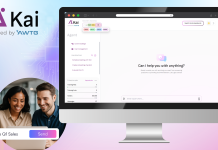Shahid Younis, CEO of the Data Whizz Academy, examines why local government still prioritises intuition over a data-driven approach
In 2018, Forbes published an article which claimed that ‘Every Company Is a Data Company’. Data is a core commodity irrespective of industry and sector which needs human expertise to translate it into insights. The willingness to act on these insights is what ultimately makes someone ‘data-driven’.
Harnessing data is primarily about driving business value via data mining and analytics. The end goal is creating a data-driven culture where everyone understands the importance of collecting good data and has access to it to support enterprise decision-making.
Implementing a data-driven approach is just as important in the public sector as it for private companies. Due to continuous budgetary cuts since the 2008 financial crisis, it is incredibly challenging for local governments to effectively deliver a multitude of services on a shoe-string budget. Furthermore, the COVID-19 pandemic has put even more strain on local councils to ensure the right decisions are being made at the right time.
In my 12 years’ experience as an elected councillor and many years of consultancy in the UK central and local government, I have found that data is still considered a cost and by-product, rather than an asset. Too many decisions are still being made on ‘gut feel’, rather than evidence-based. This is backed by a recent findings from Qlik and Accenture’s ‘Human Impact’ report, which found 41% of public sector and government employees frequently defer to making decisions based on intuition over data-driven insights.
It begs the question: what is holding the public sector back from becoming fully data-driven?
Invest in data today for better decisions tomorrow
One of the biggest challenges I have experienced is to persuade senior management in the public sector to invest in data-driven initiatives. The public sector prizes experience and intuition over data-based decision-making. Although mindsets are now shifting, for example, in the NHS where 84% of Trusts used data to track patient welfare during the pandemic, data still typically isn’t recognised as a priority area of investment for decision-makers working with reduced budgets. There are still many areas in which being data-driven is more of a hope or an illusion than actual reality.
Yet, there is an irony here. Decision-makers in the public sector argue they need to redirect resources to the most pertinent issues facing citizens, but by investing in analytics technology, they would be able to easily identify what the biggest challenges are, and where to best make a worthwhile future investment or identify efficiencies. In fact, a recent report from Qlik revealed that by accelerating the use of data across NHS Trusts could reduce pressure on the organisations’ limited and valuable resources – and benefits are similar across other public sector organisations too.
One organisation which has adopted a data-driven approach to prioritising these decisions is Camden Council. With the aid of the Qlik Sense platform, they’ve been able to incorporate datasets from different service points to achieve a 360° view of its operations and service-users’ needs. By slicing and comparing datasets across service areas, emerging patterns and problems are identified and addressed promptly.
Implementing a data-driven culture is a journey, and no organisation can confidently say that they have reached the peak because there’s always more which can be done to leverage insights from data. For organisations which are new or in the early stages of adopting data-driven initiatives, there’s another very important aspect to consider.
Equipping the workforce with data literacy
When implementing data-driven practices, organisations must ensure staff are confident when working with data. Poor data literacy skills (the ability to read, work with, analyse and argue with data) can lead to confusion and missed opportunities.
Indeed, one of the greatest challenges for organisations today is turning data into actionable insights to empower employees to make more informed decisions. According to a survey from Big Data LDN and Qlik, over a third of public sector respondents (34%) cite their organisation as either not very data literate, or not data literate at all.
For organisations that do take the time to train their staff, the benefits speak for themselves. At Camden Council, staff at all levels of seniority use business dashboards to help them analyse data, with a view to improving a range of services. All staff can make data-driven decisions with confidence, as well as predict the outcomes of different initiatives.
From reactive to proactive: How data can transform welfare departments
With the right tools and skillsets at their disposal, more councils can move towards a more proactive utilisation of data to help them address challenges before they become issues. And, given the sensitive nature of many of their services, this is critical to public safety and wellbeing.
Every day, for example, social workers make important decisions about the wellbeing of hundreds of vulnerable children and families. These decisions are often complex, concerning emotive issues in uncertain conditions. During the enforced government lockdown, police have warned online child abuse is set to rise, meaning staff at this time are busier than ever.
Technology has come a long way which can help councils, as they need to be smarter at identifying potential victims so they can empower and give their staff an advantage. However, in most cases the approach is still very reactive – a situation happens, and social services react. This needs to change. Traditional approaches must adapt to suit the modern complex digital age.
Some local authorities are empowering their workforce with data through trials of predictive analytics for child safeguarding. When implemented securely and responsibly, data-led approaches like this could be the future of safeguarding children, giving overwhelmed social workers an advantage.
From predicting child safeguarding issues and crime hotspots, to refuse management, predictive analytics enable organisations to take proactive steps. The ultimate purpose is to increase efficiency across the public sector that will result in better service for citizens, value for money for the taxpayer, and a more effective, flexible and progressive public sector.
A blueprint for an insight-driven public sector
While some local councils have invested in data-driven initiatives, more needs to be done to ensure all public sector employees – from senior executives to front-line staff – are empowered with strategic and operational insight. It offers many benefits including greater employee engagement and higher productivity. However, its ultimate purpose is to sharpen corporate strategy and drive innovation.
Data strategy is incomplete without a data-driven culture to support it. Data culture and data success are intertwined and interdependent. With the right technology and training, data can be democratised to give public sector employees the confidence and insight to make the right decisions every time.











